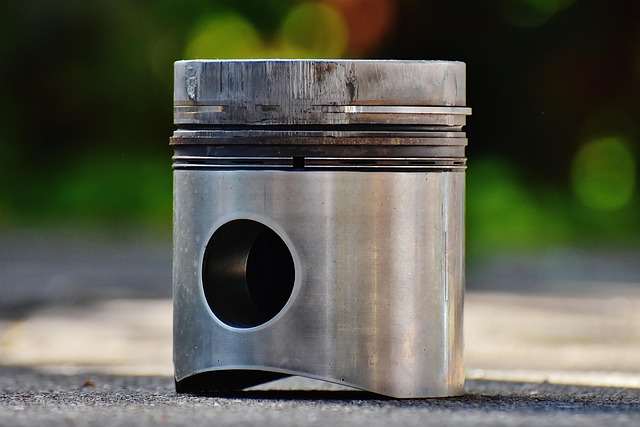Looking to register your car in California? This comprehensive guide will walk you through the process step-by-step. First, understand the state’s unique registration requirements for both new and used vehicles. Then, gather essential documents for a seamless vin verification process—a crucial part of the registration. Learn how to perform the VIN check, submit your application with fees to the DMV, and finally, receive your registration plate and necessary documents.
- Understand California Car Registration Requirements
- Gather Necessary Documents for VIN Verification
- Perform Vehicle Identification Number (VIN) Check
- Submit Application and Fees to DMV
- Receive Your Registration Plate and Documents
Understand California Car Registration Requirements

Before registering your car in California, it’s crucial to understand the state’s specific requirements. One key aspect is ensuring that your vehicle has undergone a valid vin verification. This process involves checking the Vehicle Identification Number (VIN) to confirm the car’s authenticity and history, which is critical for safety and regulatory compliance. In California, this often includes a thorough vin inspection to verify that the car meets all necessary standards.
Additionally, you’ll need to meet certain documentation criteria. This typically includes providing proof of ownership, a current vehicle registration from your previous state (if applicable), and valid identification. For those seeking a more convenient approach, consider mobile vin verification or mobile vin inspection services that can come to you, streamlining the registration process even further.
Gather Necessary Documents for VIN Verification

Before you begin the registration process, ensure you have all the essential documents for VIN (Vehicle Identification Number) verification. This step is crucial as it ensures the accuracy of your vehicle’s information and facilitates a smooth registration experience in California. Gather the following:
1. A valid driver’s license or state ID card.
2. The completed California Vehicle Registration Application form, which can be obtained from the Department of Motor Vehicles (DMV).
3. Proof of insurance, demonstrating that you have the appropriate coverage for your vehicle.
4. For a mobile VIN verification or inspection, have your vehicle’s title at hand if it’s available. Otherwise, be ready to provide details about how and where you acquired the car.
Perform Vehicle Identification Number (VIN) Check

Before diving into the registration process, it’s crucial to perform a Vehicle Identification Number (VIN) check. This step is essential for ensuring that your car is safe and legal to register in California. A VIN verification helps to confirm the vehicle’s history, including its ownership, accident records, and any outstanding issues that might prevent registration.
Consider using a mobile vin verifier or conducting a mobile vin inspection to simplify this process. These services allow you to complete a VIN check quickly and conveniently from the comfort of your own home or even while you’re on the go. In light of these modern options, navigating the registration process has never been easier for folks in California looking to register their vehicles.
Submit Application and Fees to DMV

After preparing your car’s necessary documents and ensuring that it meets all safety standards, the next step is to submit your application and fees to the DMV for registration. This crucial process involves filling out a vehicle registration form, which can be obtained online or in person at any California Department of Motor Vehicles (DMV) office. Along with this form, you’ll need to provide key details such as your personal information, car specifications, and proof of insurance.
One important aspect is ensuring accurate vin verification. This process involves submitting your vehicle’s unique 17-character Vehicle Identification Number (VIN) for cross-reference against the DMV’s database. You can accomplish this through various methods, including using a mobile vin verifier or undergoing a vin inspection to validate the car’s history and ensure it’s not a stolen vehicle or has any outstanding issues. This step is vital to legally register your car in California.
Receive Your Registration Plate and Documents

After submitting your application and required documents, the California Department of Motor Vehicles (DMV) will process your request. One of the final steps in this process is issuing your vehicle’s registration plate and essential paperwork. This typically arrives within a few weeks of approval, but you can expedite the receipt by utilizing services like mobile vin inspection or mobile vin verification, which allow for real-time, on-site VIN (Vehicle Identification Number) checks.
Once received, carefully review the documents to ensure accuracy. These materials include your registration certificate, which details your vehicle’s information and registration status, as well as other crucial paperwork related to insurance and tax payments. Keep these documents secure and handy for future reference or when selling or transferring ownership of your vehicle. Remember, proper documentation is key to maintaining compliance with California’s vehicle registration regulations.
Registering a car in California involves understanding the state’s requirements, gathering essential documents for VIN verification, performing a vehicle identification number (VIN) check, submitting an application with fees to the DMV, and finally receiving your registration plate and necessary documents. This process ensures your vehicle complies with state regulations, facilitating smooth operations on California roads. Remember, proper vin verification is crucial for a seamless registration experience.
